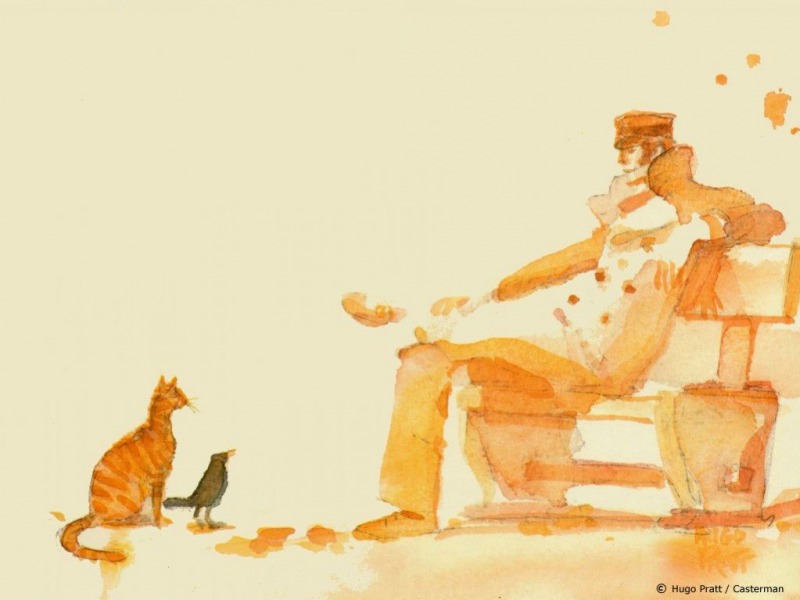EdComix Erasmus+ project has spurred our curiosity about the culture of comics in other European countries and educational systems. It is notable that while for Belgium and France, comics are part of society as the ninth art, the situation is different in other countries. In this article, you can have an overview of the comics in Italy.

To start with a brief history on the Italian comics’ origins…
The official date of birth of the comic strip in Italy is considered to be 27 December 1908, when the first edition of the “Corriere dei Piccoli” was published. The famous magazine was the first real “industrial” edition, with a very wide audience, that focused primarily on comic strip characters, and it was also the publisher of the first Italian serialised characters, by Attilio Mussino and Sergio Tofano.
After the Second World War, the audience of comics showed an important widening; in these years comics are no longer considered a product for children, but also for adults.
Since ’50, many new characters and iconic comics were created. This is the case of Tex Willer (the legendary western of Gian Luigi Bonelli and Aureli o Galleppini); Diabolik (a ruthless thief created by the Giussani sisters); the detective Dylan Dog (Tiziano Sclavi); and the famous Corto Maltese (designed by Hugo Pratt). In those, there are also some female characters that have remained in the history of major comics, such as Valentina (created by Guido Crepax), Julia (created by Giancarlo Crepaldi) and Eva Kant (Diabolik’s companion).

In recent years, comics have become popular thanks to the Japanese manga and superheroes of Marvel’s histories. Moreover, graphic novels reached a more widespread public due to Gipo and Zero Calcare, these artists fully succeeded in recounting the contradictions and excesses of modern society. Furthermore, Davide Toffolo and Leo Ortolani’s characters caught the attention of young readers with their satiric representation of adolescence (Cinque allegri ragazzi morti) and superheroes (Ratman).
Since the first decade of 2000, comics began to lose readers. This phenomenon could be due to the new IT devices and multimedia entertainments that freely and easily accessible. Some of the most important and successful comics in Italy had to face an important loss in their sales. Attempting to increase sales and counteract the loss of customers, many publishers have applied various expedients, such as creating more complex plots, improving graphics or creating films and multimedia content about their comics. Unfortunately, these techniques have not brought the desired results.
Even though classic comics are losing readers, new genres are emerging and gaining popularity. For example, Zero Calcare and Gibi have led numerous readers towards the graphic novel genre, either by disseminating material on the web and actively communicating with their audience or by selling their works in bookshops.
Another example of a new genre of popular comics has been created by Sio. This artist has caught the attention of the public, especially the younger ones, through his comics with very essential graphics, created by the fusion of meme humour andsurreal situations and characters. Thanks to his particular style, Sio has managed to become quite popular and publishes two very well selling magazines.
So, even though the iconic Italian comics are experiencing a sharp decline in sales, new comic formats and innovative ways of interaction with the audience are keeping the comic book’s popularity alive.
Comics used in education…
As well as being a means of entertainment, comics can also be used in education to make teaching more engaging. In 1980 Enzo Biagi published a series of comics about Italian history. There are various Italian comic strips that can help children to better understand historical events, because they reproduce, even if in a fictional way, some historical characteristics that are completely true. This application of comics has been extended to literature, Italian language teaching and even Statistics. For instance, some Graphic Novels are perfect for narration and the discovery of cultural and stylistic references from past eras or foreign places and states. Comics can also be a privileged guide to “reading” today’s world and becoming aware of certain historical and sociological dynamics with a true critical sense.
Through comics, the identification of literary genres is more explicit, because their stylistic figures are more evident.
Even though comics in Italian culture have struggled to be recognised as a valuable literary genre and a useful tool for learning, a number of projects are now emerging which aim to enhance the use of comics in education. Some examples are “Comics at school”, in which comics are used as a means to promote participation in sports activities, and Comic@school, which aims to enhance the educational potential of comics in the school context.